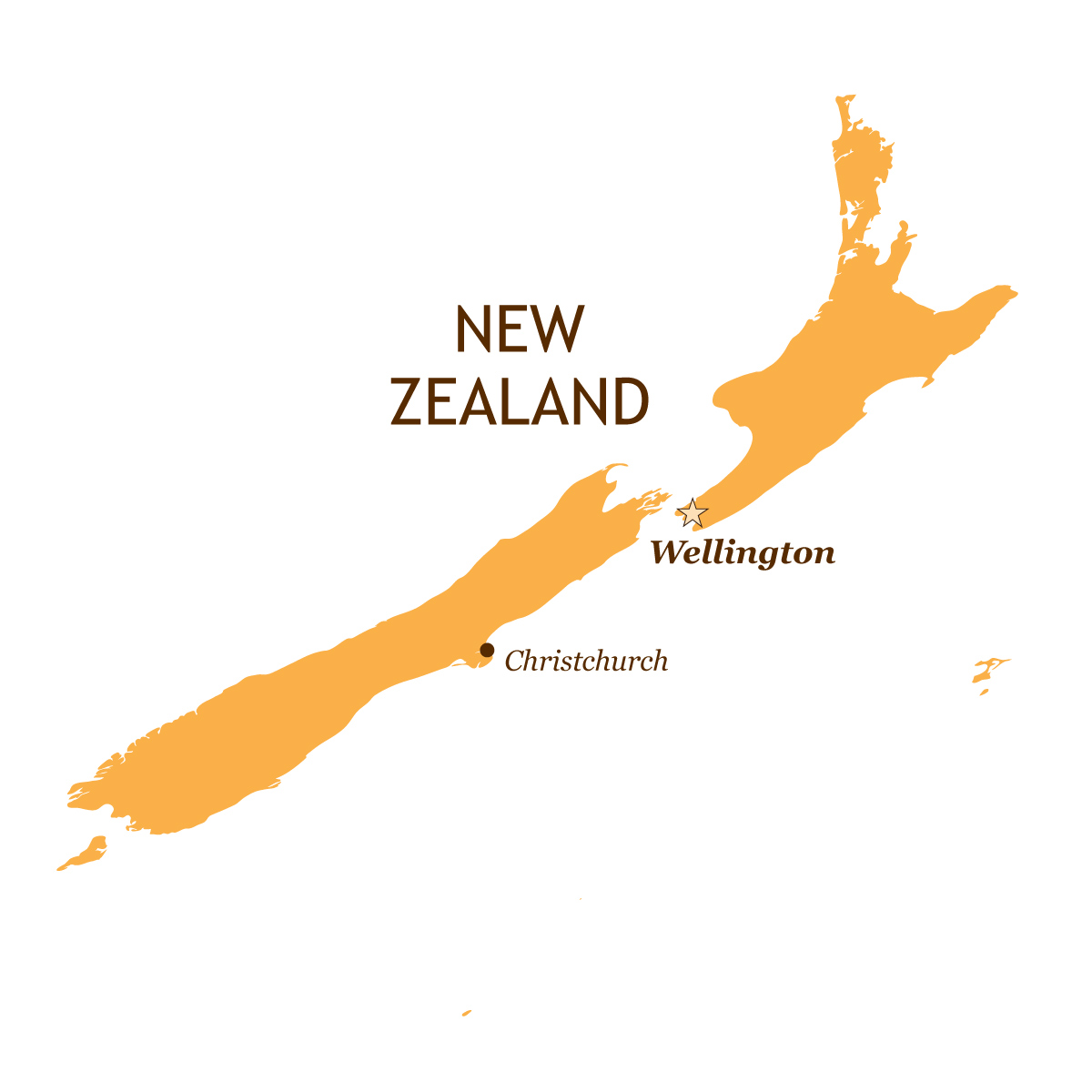
New Zealand
New Zealand is one of the southernmost countries in the world. It is known for its stunning and unique natural landscape, high quality of life, and rich culture derived from both Māori and European traditions. Grab your kids and let’s learn about New Zealand!
QUICK STATS
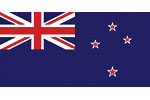
New Zealand lies east of Australia across the Tasman Sea and south of the Pacific islands of New Caledonia, Fiji, and Tonga. It consists of two major islands (North Island and South Island) and around 700 smaller islands.
A brief history for kids to learn about New Zealand
Historians believe New Zealand was the last land area to be settled by humans. It was first settled by Eastern Polynesians during the 13th century AD. These people developed a distinctive culture called Māori.
The first encounter between European and Māori people occurred in 1642, between Chief Ngāti Tūmatakōkiri and a crew of a Dutch explorer. The Māori locals killed four Europeans. And, consequently, Europeans did not visit New Zealand again until 1769, when British explorer James Cook mapped the area.
During that time, European Christian missionaries began to settle in New Zealand, gradually converting the Māori population to Christianity.
Despite significant Māori disapproval and a call for independence, the British government claimed full sovereignty over the entire area of New Zealand in 1840. This led to large waves of European migration in the following years. As a result, the British government confiscated much Māori land to meet settler demands. Soon enough, the British forces faced armed Māori resistance, leading to the New Zealand wars.
The British colony of New Zealand became self-governed in 1856. By that time, the main urban areas and trade centers were located on the North Island. Out of concerns that the South Island would eventually become a separate colony, the capital was transferred from northern Auckland to Wellington down south.
As the Liberal Party came to power during the 1890s, New Zealand was the first nation in the world to grant all women the right to vote and guarantee minimum wage to all its citizens.
New Zealand experienced increasing prosperity after World War II. More and more Māori came to the cities in search of work during that time, leaving their traditional way of life behind. Such phenomena, on the other hand, led to Māori protests criticizing Eurocentrism and demanding legal and national recognition of Māori culture.
New Zealand in more recent history
During the 20th century, various legislations and parliamentary discussions promoted New Zealand’s right to self-governance. But, the rights of appeal to the British royal courts were abolished only in 2003.
New Zealand ranks highly in international measures of quality of life and human rights. It is known to have low levels of perceived corruption. Nevertheless, social inequalities persist, especially due to structural disparities between Māori and New Zealanders of European descent.
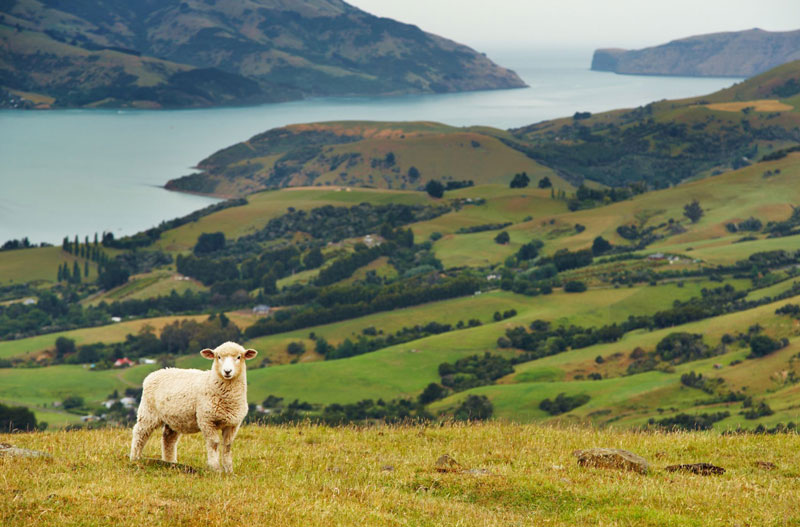
Fun facts about New Zealand for kids
- The English word “taboo” originates in the Maori word “tapu”, meaning “prohibited” or “sacred”.
- Located in New Zealand, Nelson’s Blue Lake is the world’s clearest lake, visible up to 80 meters (262 feet) deep.
- New Zealand is known for its biodiversity. However, bats are the only mammals native to the country. Māori and Europeans introduced all other mammals that now live in the country.
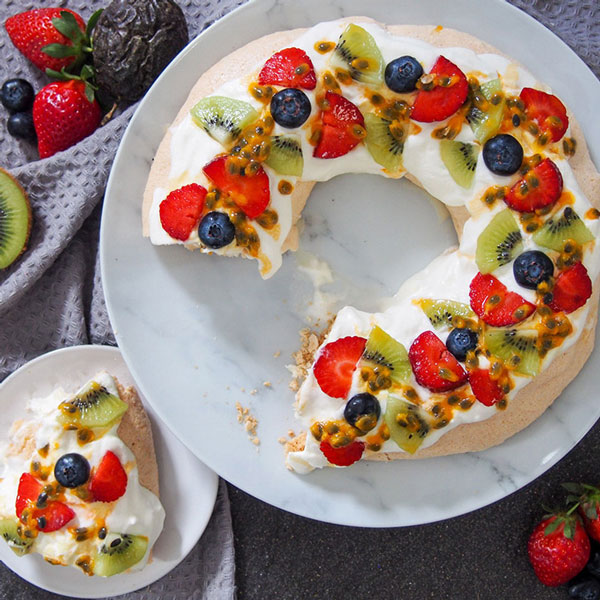
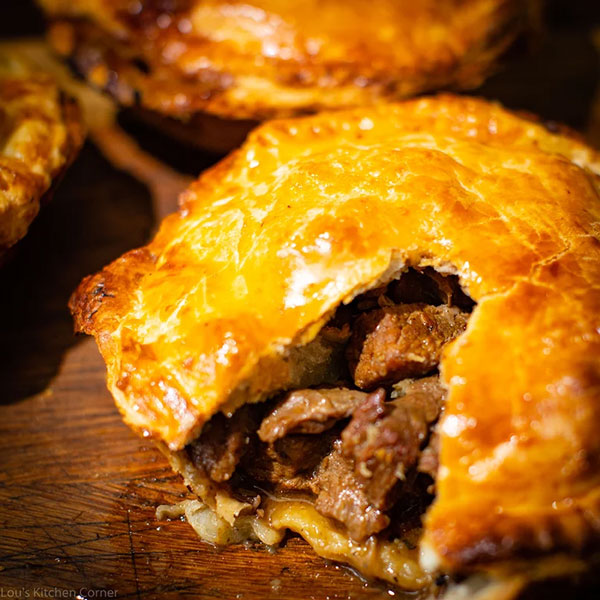
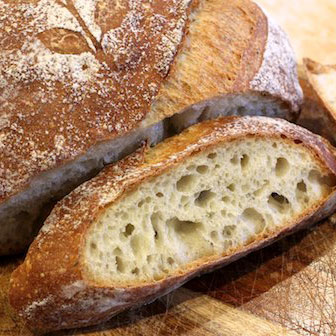
What do New Zealanders eat? Facts for kids to learn about mealtime in New Zealand.
Most New Zealanders eat 3 meals per day, including occasional snacks. In the past, people often consumed the main meal around midday. However nowadays most locals work until the evening, so their main meal is dinner, which they often refer to as “tea”.
Breakfast (around 8 am)
Most New Zealanders start their day with tea or coffee, accompanied by a bowl of cereal or a slice of bread (Rēwena bread or toast, for example).
If one desires a larger meal, they may prepare a ‘fry up‘, a New Zealand rendition of an English full breakfast. The dish contains baked beans, scrambled egg, bacon, cooked tomatoes, mushrooms and hash browns.
Another popular breakfast option (or lunch, or dinner) is ‘boil up‘, a hearty, brothy soup of Māori origin. It is made with pork, vegetables such as kumara (sweet potato), and doughboys (flour dumplings). It is often served with fry bread. Puha is an herb used in the soup that has a flavor similar to watercress.
Lunch (around noon)
As dinner is the main meal of the day, lunch tends to be on the lighter side. One might have a hot pie (a pastry filled with minced meat), fish and chips, or a salad.
A big and festive communal lunch often takes place on Sundays, including roasted beef or lamb and baked vegetables.
Dinner (6-7 pm)
Traditionally, New Zealanders often serve seafood or meat and seasonal vegetables (stewed or roasted) for dinner.
Many consider dinner, known as ‘tea,’ the perfect time for fish and chips. Fresh local fish and Pāua (Abalone or sea snail) fritters are other popular dinner options.
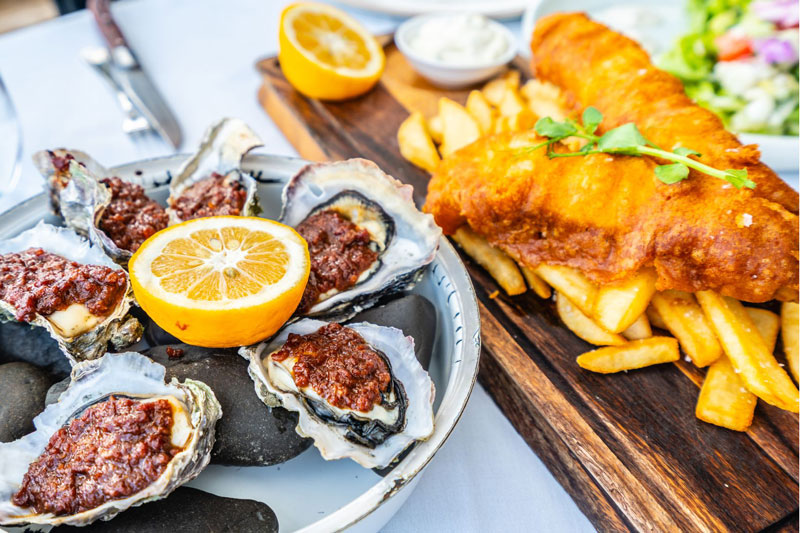
Food etiquette in New Zealand
In general, table manners in New Zealand are relatively casual. While many eat in the Continental manner – holding the fork in the left hand and the knife in the right – others choose to adopt American table manners.
Māori dining etiquette is a bit different. If a family invites guests, a Powhiri takes place. This is a traditional Māori gathering that aims to welcome visitors and make them one with the home people.
During a Powhiri, they serve the meal in a marae, a carved meeting house. An elder blesses the food before everyone eats. As a form of greeting, the host would choose to seat the guest/s amongst the locals, so they could chat and get to know one another while eating.
New Zealand food facts
Food in New Zealand can tell us a lot about cultural interaction, biodiversity, and culinary creativity. As most of the nation’s population consists of people of either Polynesian or European descent (or both), New Zealand cuisine is essentially at the crossroads of Māori cuisine and British cuisine.
Let’s take a look at these two.
Māori cuisine
As the first human settlers of New Zealand, the Māori people introduced various Polynesian fruits and vegetables to the island, such as kūmara (a species of sweet potato) and taro (a starchy root). A traditional Māori meal is composed of poultry and fish, accompanied by Polynesian or local, seasonal vegetables.
Most meals were traditionally cooked in an hāngī, a traditional underground oven that is similar to the Polynesian umu. Nowadays, people save the hāngī meals for special occasions, because they take so long to prepare.
European Cuisine in New Zealand
When the first Europeans arrived in New Zealand, they struggled to find ingredients with which they could cook European dishes. As a result, they adjusted some dishes to the environment, using local vegetables and meat sources that were more readily available (substituting lamb for goose, for instance). New Zealand cuisine today is much influenced by British cuisine. Locals love dishes such as fish and chips, meat pies, and scones.
Unique New Zealand Dishes
As a cuisine that was formed out of various sources of influence, it is not always easy to identify a unique culinary fingerprint. Nevertheless, as years went by, New Zealand cuisine evolved and the people developed local specialties.
Colonial goose, for example, is a preparation of roasted stuffed leg lamb. The colonists would often substitute goose meat for lamb or mutton, hence the dish’s name.
Another local staple is Rēwena bread. This is a sourdough bread of Māori origin, leavened with a fermented potato starter.
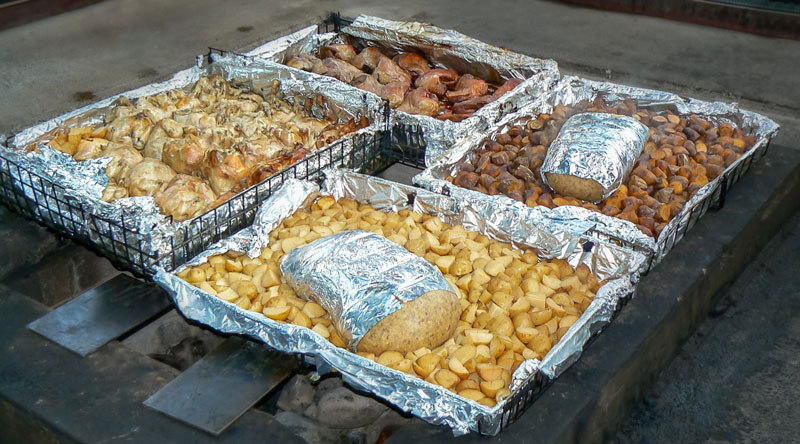
Holidays in New Zealand
New Zealanders love to celebrate, gather, and feast together.
Discussing holidays is a great way for kids to learn about New Zealand. In New Zealand, national holidays and celebrations can be divided into three main categories: remembrance days, Christian holidays, and holidays of Māori origin.
Waitangi Day (February 6)
Celebrated every February, Waitangi Day commemorates the Treaty of Waitangi, signed between the British Empire and Māori chiefs in 1840. The treaty paved the way for the birth of the nation. To celebrate, people around the country hold ceremonies and social gatherings. These include festivities and reflections on New Zealand’s history.
Christmas (December 25)
As a predominantly Christian nation, people all around the country celebrate Christmas. You can find Christmas trees and Santa Claus costumes (also known as “Father Christmas” in New Zealand) in every corner.
As New Zealand is located in the southern hemisphere, Christmas falls during summertime. As such, the celebrations fit the season. Instead of decorating churches and houses with mistletoe and holly, people use native ferns and flaxes. Rather than feasting on comforting winter food at home in front of a blazing fire, many New Zealanders enjoy outdoor gatherings, with Christmas BBQs becoming increasingly popular.
A must on the Christmas table is the meringue dessert pavlova.
Matariki (Māori New Year, June)
During June, a large cluster of stars (also known as “Matariki” in Māori or “Pleiades” in English), rises in the sky during early morning. It marks the changing of the seasons and the beginning of the Māori New Year.
In Māori culture, Matariki is an occasion to mourn the ones who passed, celebrate the present, and prepare the ground for the future. The ceremony consists of three parts: viewing the stars, remembering the deceased, and making an offering of food to the stars.
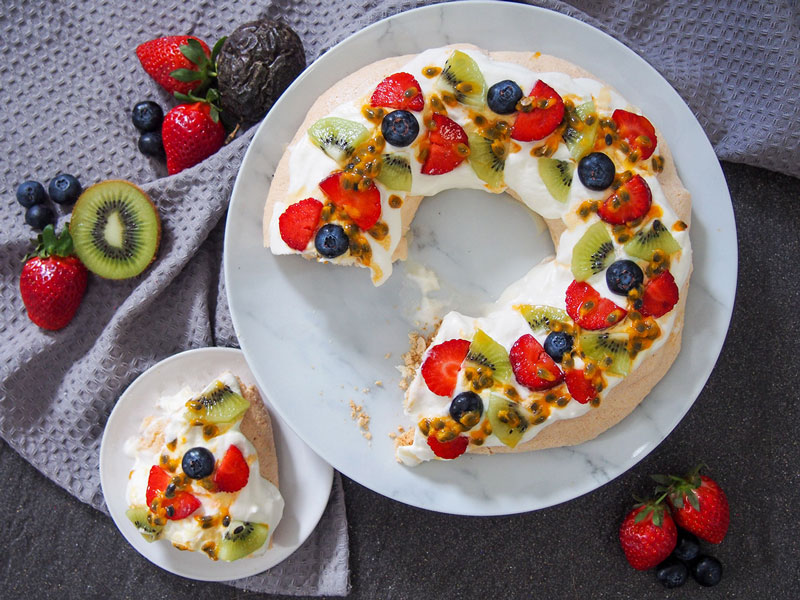
At-home ideas for kids to learn about New Zealand
As a part of your homeschool New Zealand unit study or as a supplement to your child’s Oceana unit at school, try some of these ideas at home!
- In the south of New Zealand (specifically the Southland and Otago regions) you’ll find the Southland cheese roll (also called Southland sushi). A piece of bread is spread with a cheese sauce, rolled, and grilled (or baked) to golden perfection. Your kids will love to get into the kitchen and give this New Zealand version of grilled cheese a try!
- New Zealand was one of the first countries in the world to promote human rights, equality, and social acceptance. Since the 19th century, the nation has taken several brave steps in that path, being the first nation to allow women to vote, for example. Research online and write at least 3 more actions of this nature, proving New Zealand to be a pioneer nation in sanctifying human rights. It is amazing to think that some things that we now take for granted were taboo in the past.
- A boil up is a traditional Māori soup. It is made from pork, leafy greens, and root vegetables, often along with flour dumplings known as “doughboys”. The choice of vegetables can vary by season and/or region. Thus, you may have a hard time finding some igredients in a traditional Māori boil up. This is where your creative spirit comes in. Take a visit to the nearest farmers market, choose leafy and root vegetables that appeal to you, and make your own boil up at home!
- New Zealanders are known as Kiwis. Why? The kiwi bird is New Zealand’s national symbol because it is highly regarded by the Māori. Look up some images of kiwi birds then draw and color your own pictures!

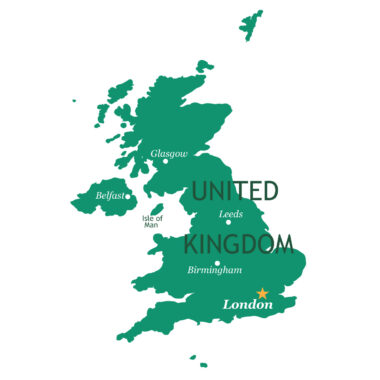
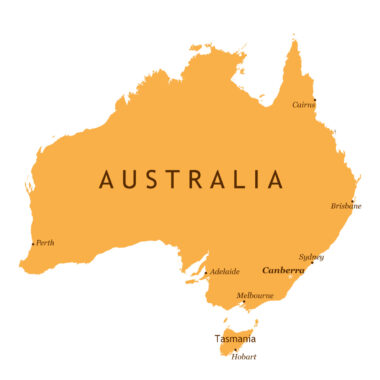
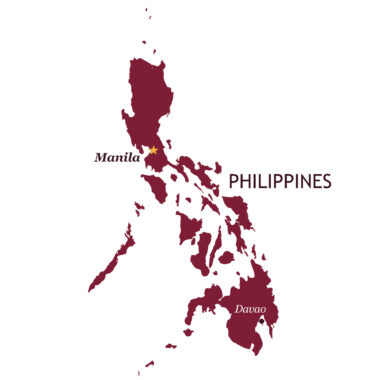


Have a Question/Comment?